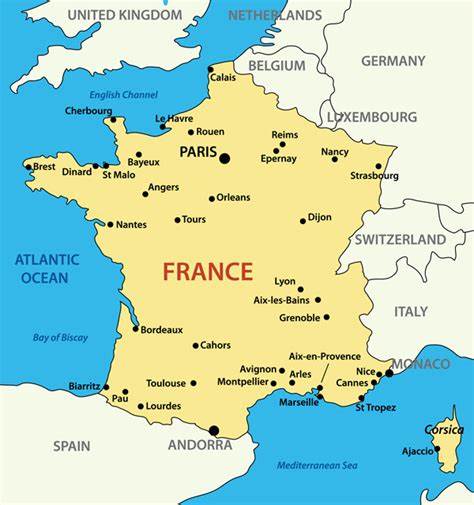France
Grades 5+
 [1] Paris is known for its people, but perhaps it’s better known for its royal statues and imposing monuments, tributes, and buildings. Each has a story to tell. It’s as if the people and times they represent left memories behind. Together the structures give us a picture of France’s changes over the centuries. (4)
[1] Paris is known for its people, but perhaps it’s better known for its royal statues and imposing monuments, tributes, and buildings. Each has a story to tell. It’s as if the people and times they represent left memories behind. Together the structures give us a picture of France’s changes over the centuries. (4)
∗
[2] From the river Seine, the Louvre appears as an imposing structure surrounded by a large park, with a number of turrets and towers. Built during the 12th century, the Louvre served as a fortress for the protection of the city of Paris. This formidable structure, with a 100-foot tall main tower and a deep moat, was integral to the safety of the city. Soon it became an iconic symbol of Paris. However, as time passed, the Louvre became increasingly obsolete in its original function. (14)
[3] As the city’s defenses grew stronger, the need for the Louvre as a fortress waned and it embraced a new purpose. In the 16th century, its walls were adorned with artwork, creating the foundation for the world-famous museum it is today. It was Napoleon Bonaparte who officially turned the Louvre into a museum. Nowadays it is home to some of the most famous works of art in the world, such as the Mona Lisa. (9)
∗
[4] About 10 miles from the Louvre Museum at the heart of Paris, in the western suburbs of Paris, the eye can’t miss the Palace of Versailles. (6)
[5] The site of this palace was originally the hunting pavilion of King Louis XIII. Then, in 1789, it was the site of the French Revolution. At the time, King Louis XVI was living in the palace. On July 14, a crowd stormed the palace and forced the king and his family to move to Paris. King Louis and his wife, Marie Antoinette, were put to death by guillotine. This event marked the beginning of the French Revolution and the end of the absolute monarchy. (11)
∗
[6] Less than two miles to the west of Versailles, on the other side of the Seine, stands the Eiffel Tower. (3)
[7] Rising 324 meters into the sky, the Eiffel Tower overlooks the Seine river and the whole of Paris, the City of Lights. It was built in 1889 as the entrance arch for the World’s Fair. When completed, the tower was the tallest structure in the world. (6)
[8] Then for over 130 years, this giant steel structure stood as a silent witness to some disruptive events in France’s history. In the early morning of June 23 or 28, 1940 (the date remains disputed today), Adolf Hitler came to Paris for a Blitz Besuch (lightning visit). It was a conquered territory, part of an occupied zone under German administration. The Führer went to several places in Paris, the Eiffel Tower among them. There, surrounded by artists, a sculptor, and an architect, among others, Hitler posed in front of the tower for a photo. (17)
∗
[9] Underground, there is a monument that offers a unique glimpse into Paris’s history. (1)
[10] The Catacombs of Paris is a network of tunnels and caves located beneath the city streets. This spooky labyrinth was originally created as limestone quarries that were later converted into a burial ground for Parisians during the 18th century. Home to the remains of more than six million people, the Catacombs site is the largest cemetery in the world. Some people believe the Catacombs are haunted by the spirits of those who are entombed there. (11)
France Activity 1
Find the prepositions in each paragraph. The number is in parentheses. Fill in the right-hand column of the table. Do not include the word as except as noted in the table.
Paragraph | Number of Prepositions | Write the Prepositions |
1 | 4 |
|
2 | 14 | as, as, |
3 | 9 |
|
4 | 6 |
|
5 | 11 |
|
6 | 3 |
|
7 | 5 |
|
8 | 17 | as, |
9 | 1 |
|
10 | 11 | as, |